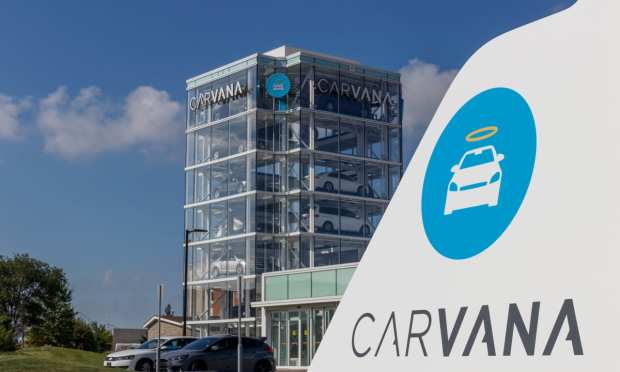Carvana Sells More But Spends More As Effort To Meet Demand Proves Costly

Carvana, the fastest growing and second largest seller of used cars in the country, said Thursday (Feb. 25) it set several sales and profitability records for the fourth quarter and full year but posted a larger than expected loss from rapid expansion as it tries to keep up with demand.
For the three months ending Dec. 31, the online automotive retailer, known for its two dozen touchless pickup locations it calls “vending machines,” said its revenues rose 65 percent to $1.8 billion as it sold 72,172 retail units, which was up 43 percent from Q4 2019.
For the year, Carvana said it sold 244,000 vehicles, marking a 37 percent increase from 2019, and a 100-fold increase from the 2,100 units it sold when it launched just seven years ago in 2014.
“2020 highlighted the strengths of our business model and validated our vision for the future of car buying,” Carvana Founder and CEO Ernie Garcia said in a news release announcing the earnings results, before thanking employees for navigating what he called an unprecedented year of constant adaptation.
A big part of that adaptation was not only dealing with the changing requirements of the pandemic but also trying to keep up with changing lifestyle habits that spurred demand for cars, an expansion that led to a wider-than-expected net loss of $155 million, or $0.87 per share for the quarter, versus the average loss estimate of 47 cents per share.
To try to keep pace with demand, Carvana launched two new inspection and reconditioning centers (IRCs) in a quarter, added two vending machine facilities (for a total of 27) near Detroit and Atlanta, and add five new retail markets, bringing its year end total 266, which covers about three-quarters of the U.S. population.
“In the short term as a result of the accelerating adoption of our model and the strength of our customer experiences and our brand, we have far more demand than we were able to satisfy with our current supply chain,” Garcia told analysts on the company’s earnings call. “As evidence of this demand, in January we grew sales by 80 percent year over year, and did so with just half the immediately available inventory that we had a year ago. This demand, paired with the operational stresses of three successive waves of COVID have led to constraints across our operational chain.”
Demand And Delivery Times Rising
As Carvana struggles to buy and sell more cars across the country enroute to its long-stated goal of selling 2 million vehicles a year (or not quite 10x from current levels), it has been able to increase not only the volume, but the profitability it makes on each vehicle it sells.
According to the Q4 release, the company’s total gross profit per unit (GPU) was $3,379, about 20 percent or $549 higher than the year before.
“We will continue to expand in 2021 and expect to serve 78 to 80 percent of the U.S. population in more than 300 markets by year end,” CFO Mark Jenkins said on the call, noting the company’s significant progress last year in scaling its vehicle production capacity, which continues to be an area of focus for the business.
“We added four inspection and reconditioning centers in 2020, bringing our annual production capacity at full utilization to over 600,000 units at year end,” Jenkins said, “and we expect to open two IRCs 2021, and eight in 2022, and ending 2022 with more than 12.5 million units of annual production capacity at full utilization.”
In the meantime, Caravana said it is focusing on ramping up production and scaling back delivery times, which Garcia said were up about 40 percent from a year ago.
“I don’t think that there’s a magical moment where delivery times get too long and that starts to materially crimp sales. I think it’s much more of a continuous effect and I think that part of that increase in delivery times is just due to the underlying strain of ramping the business as quickly as we are,” he said, pointing to the recent southern snow storms as another contributing factor.
As far as a forecast is concerned, Carvana said in light of the size of its opportunity it plans to invest in building the business for the long term, it expected to suffer a small pre-tax margin loss this year.
“We are excited about 2021 which we expect to be another significant step toward our long-term goals,” the company said.
